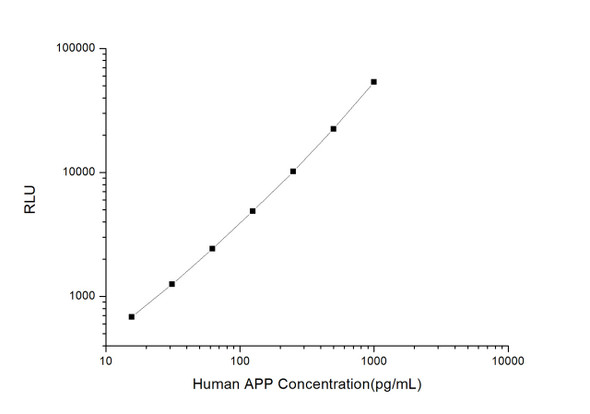Description
| Product Name: | Recombinant Human Amyloid Precursor (C-FC) |
| Product Code: | RPES6238 |
| Size: | 10µg |
| Species: | Human |
| Expression Host: | HEK293 Cells |
| Synonyms: | Amyloid Precursor, Amyloid Precursor Protein 695, APP695 |
| Mol Mass: | 94.6 kDa |
| AP Mol Mass: | 120-145 kDa |
| Tag: | C-Fc |
| Purity: | > 95 % as determined by reducing SDS-PAGE. |
| Endotoxin Level: | < 1.0 EU per μg of the protein as determined by the LAL method. |
| Bio Activity: | Testing in progress |
| Sequence: | Leu18-Lys612 |
| Accession: | P05067-4 |
| Storage: | Generally, lyophilized proteins are stable for up to 12 months when stored at -20 to -80°C. Reconstituted protein solution can be stored at 4-8°C for 2-7 days. Aliquots of reconstituted samples are stable at < -20°C for 3 months. |
| Shipping: | This product is provided as lyophilized powder which is shipped with ice packs. |
| Formulation: | Lyophilized from a 0.2 μm filtered solution of PBS, pH 7.4. Normally 5 % - 8 % trehalose, mannitol and 0.01% Tween80 are added as protectants before lyophilization. Please refer to the specific buffer information in the printed manual. |
| Reconstitution: | Please refer to the printed manual for detailed information. |
| Background: | Amyloid precursor protein (APP) is a type I membrane protein with several isoforms due to alternative splicing, performs physiological functions on the surface of neurons relevant to neurite growth, neuronal adhesion and axonogenesis. Of the three major splice isoforms of APP (APP695, APP751, and APP770) APP695 is the predominant neuronal form from which Amyloid beta peptide and transcriptionally-active cleaved intracellular domain of APP (AICD) are preferentially generated by selective processing through the amyloidogenic pathway. Human APP695 consists of a 17 amino acid (aa) signal sequence, a 607 aa extracellular domain (ECD), a 24 aa transmembrane domain, and a 47 aa cytoplasmic domain. Within the ECD, human APP695 shares 97% aa sequence identity with mouse and rat APP695. Amyloid beta is a major molecule implicated in pathogenesis of Alzheimer's disease (AD) and related dementias. AICD regulates expression by direct promoter binding of multiple genes, including APP itself, the beta-secretase, BACE-1 and the Amyloid beta-degrading enzyme, Neprilysin. As such, APP695 plays an important role in brain development, learning and memory, synaptic plasticity, and neurodegeneration including AD. |






